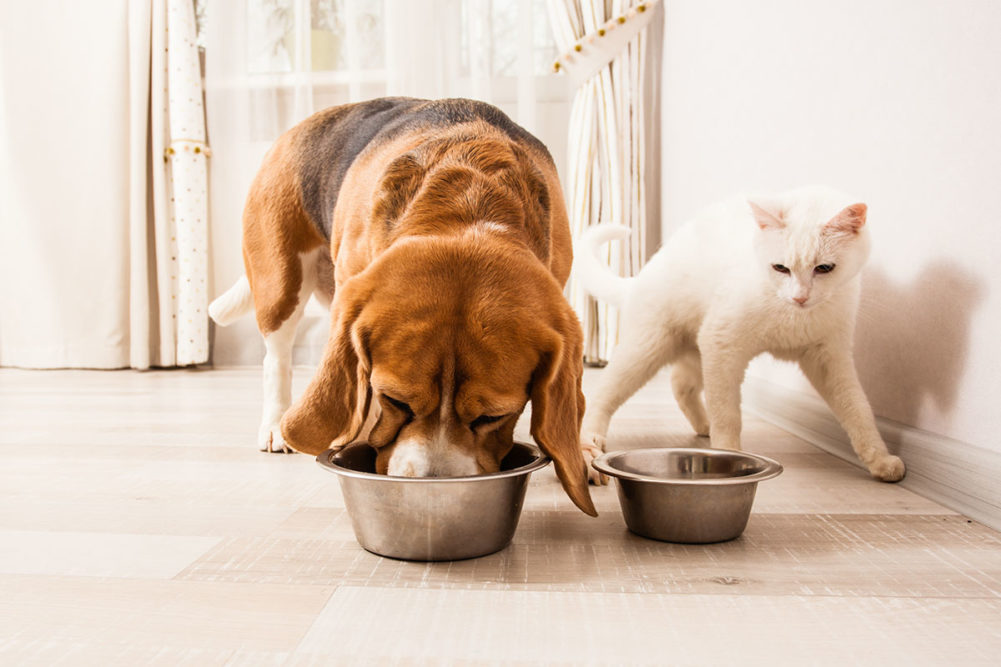SÃO PAULO — Wet pet foods could have a higher impact on the environment compared to dry and homemade companion animal diets, according to a study published by four academic professionals from the University of São Paulo.
The study, “Environmental impacts of diets for dogs and cats,” compared dry, wet and homemade pet food formats based on their environmental impacts, including greenhouse gas emissions, land use, freshwater withdrawals and other emission metrics. The primary focus on the study was based on the ingredients, production, digestibility and consumption of these pet food formats; the study did not measure environmental impacts from packaging or transportation.
The study was authored by Vivian Pedrinelli, Fabio A. Teixeira, Mariana R. Queiroz and Marcio A. Brunetto, and published on Nov. 17 in “Scientific Reports,” a research journal focused on natural sciences, psychology, medicine and engineering.
According to the study, the dog population in Brazil is now larger than the country’s population of children, and Brazil is home to the third-largest cat population in the world at 22.1 million. An increasing pet population is fueling increased demand for high-quality diets, which could have negative impacts on the environment.
Food and animal production accounts for a sizeable portion of global greenhouse gas emissions and land use, according to the study. Researchers cited the Food and Agriculture Organization (FAO) in stating that 50% of habitable land and 70% of freshwater withdrawals around the world are attributed to agriculture.
“The aim of this study was to evaluate the environmental impact of different types of diets for dogs and cats in Brazil, since it is among the top countries regarding canine and feline population and is representative in a global environmental impact scenario,” Pedrinelli et al. stated.
The study looked at 938 dog and cat diets, including 221 commercial and direct-to-consumer homemade dog diets, 37 commercial and direct-to-consumer cat diets, 397 dry and wet dog foods, and 283 dry and wet cat foods. To understand the environmental impact of each of these diets, researchers determined which ingredients are used in each pet food format, as well as the environmental impact metrics per 1,000 kcal for each ingredient, including land use, CO2 (greenhouse gas) emissions, SO2 (acidifying emissions), PO43 (eutrophying emissions), freshwater withdrawal, and stress-weighted water use. The study also calculated average protein, fat and metabolizable energy percentages for animal and vegetable ingredients across dry diets, wet diets, commercial homemade pet foods and direct-to-consumer homemade pet foods.
Among 212 ingredients identified across the 938 pet diets included in the study, Pedrinelli et al. found that 46.2% came from animal sources and 53.8% from vegetable sources. The commercial wet and dry dog and cat food formulas were found to have a slightly higher average ratio of animal-based ingredients (49.5%) and a slightly lower ratio of vegetable-based ingredients (50.5%) compared to homemade diets, which were comprised of 45.4% animal-based ingredients and 54.7% vegetable-based ingredients.
Dry pet food formulas included in the study were found to have the highest metabolizable energy (kcal/g) and nitrogen-free extract content, while wet diets provided for the highest protein and fat contents.
“In most cases, dry diets were responsible for less environmental impact than the other types of diets,” Pedrinelli et al. stated. “Regarding homemade diets, the environmental impact was intermediary between wet and dry diets, except for acidifying emissions, freshwater withdrawals, and stress-weighted water use in diets for cats, in which they were similar between dry diets and commercial homemade diets.”
Researchers estimated yearly caloric consumption of dogs in Brazil to project the annual environmental impacts of each diet format. Using this methodology, they found the consumption of wet diets would result in seven times more greenhouse gas emissions (33.56 kgs) compared to similar consumption of dry diets (4.25 kgs).
According to the study, animal proteins typically account for more greenhouse gas emissions than vegetable-based ingredients. For example, researchers noted 0.4 kgs of greenhouse gas is emitted through the production of 100 g of pea protein, while the production of the same amount of beef results in 35.0 kgs of greenhouse gas emissions.
The inclusion of more vegetable-based ingredients and byproducts in pet diets could reduce these impacts, Pedrinelli et al. noted. However, considering the nutritional needs of dogs and cats and their reliance on animal-based protein sources, more research is needed to determine how to minimize these impacts without jeopardizing the nutritional efficacy and quality of dog and cat foods.
“Sometimes the ingredient choice is made taking into consideration consumer demand instead of only nutritional composition, which can lead to ingredients that compete directly with human diets,” Pedrinelli et al. stated. “Furthermore, diets are sometimes formulated to contain an excess of nutrients. These factors represent a challenge to optimize the sustainability of pet food.
“…Suggestions to promote more sustainable pet food include the use of alternative protein sources,” they added. “As protein-rich ingredients can be one of the main sources of environmental impact, the choice of protein type is very important, not only between vegetable or animal sources but among different species, such as beef, pork, chicken, or fish.”
Read the full study here.
Read more about product development, ingredients and formulation.





